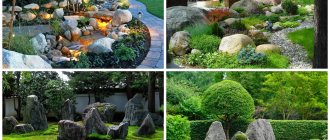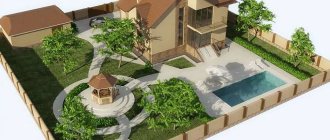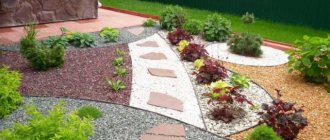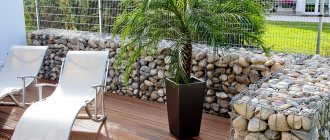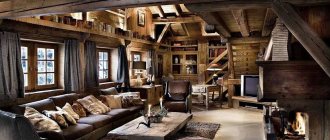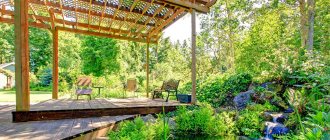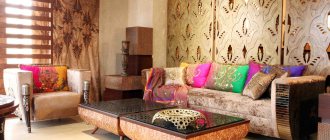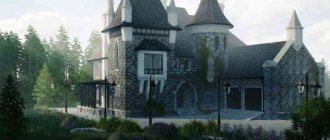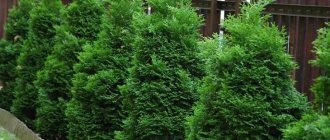The regular or formal style of landscape design is closely associated with the name of King Louis XIV and it reached its heyday in France in the 17th century, during the apogee of absolutism, so it is not surprising that it is also commonly called the French style.
Thoughtfulness, clarity, and precision of design down to the smallest detail has become a unique symbol of the triumph of beauty and order over chaos, the genius of the human mind over the forces of nature, conquest, superiority and power over the surrounding world. Regular gardens and parks, due to their compositional complexity, were primarily used to decorate castles and palaces, where they were supposed to further emphasize the monumentality and splendor of architectural ensembles. A great contribution to the formation and development of the regular style was made by the court gardener of Louis XIV, Andre Le Nôtre, who became the author of unique landscape creations in the famous parks of Chantilly, Vaux-le-Vicomte, Fontainebleau, and in the park of the Palace of Versailles. It represents nothing more than a person’s desire to streamline and organize everything rationally. Most often, compositions built on a site in a regular style resemble a strict and consistent conservative ornament, in which one part is a reflection of the other according to the rule of symmetry. Here the main concepts are rigor and refinement of appearance, as well as some orderliness, which is achieved through symmetry. Symmetry can be made from the house (where the building is the reference point) or from another design element, where it will be taken as 0. Here, the ground floor can also be taken as the reference point in the center, that is, from French, an element close to the ground . It could be anything, for example, a flower bed, a fountain, a pond, or just a lawn. The person decides here.
Nowadays, it is extremely difficult to find a clean, regular style. As a rule, the formal style is used to decorate a separate section of the garden or they borrow only the brightest and most interesting elements from it, harmoniously fitting them into gardens of other styles. This is due not only to fashion, but primarily to the labor-intensive and costly process of creating a regular garden. The formal style is a celebration of wealth, perfection and grandeur, which is inherent in classical architecture, so it will be the best decoration for mansions built in antique style, with balustrades, terraces, and rich sculptural elements. In the symmetrical layout of regular gardens, the correct proportions and shapes of majestic ancient buildings are clearly visible.
Layout
The French, or regular, style is characterized by neat, strictly symmetrical compositions made in the form of various geometric shapes. Moreover, both in the basic construction and in the details there is a law that determines the order and power of man over the wild surrounding nature. Most compositions are created over large areas and in one plane. This technique, called “parterre,” implies a quadrangular lawn, in the center of which there is a flower bed, a small pool with a fountain or a sculpture with branching paths. The ground floor is surrounded by a border of neatly trimmed evergreens such as cypress, conical spruce, pyramidal poplar and other low-growing trees with a dense geometric crown.
The ideas of pomp, grandeur and formality characteristic of the French style require a visual expansion of space, which is achieved through flat terrain and a system of long and wide paths and alleys, decorated on both sides with ornamental shrubs. Alleys paved with broken bricks or river pebbles can run parallel to each other or intersect, but must necessarily converge at the house as the central object of the composition. The French garden has two key points - the upper one, where the house is located, and the lower one with the main entrance. This arrangement is not accidental. In the old days, it was created in order to amaze guests with the pomp and grandeur of the entire composition. Along with pomp and theatricality, the French style is characterized by rationality and clarity of lines, therefore a clearly defined main axis divides the space into two absolutely symmetrical parts, the elements of which are subordinated to strict and precise forms.
One of the interesting elements is the labyrinths, which are thickets of juniper, honeysuckle or hazel with paths stretching over a large area. Shrubs for labyrinths require a mandatory geometric pruning. However, all the shrubs, trees and ponds of the French garden are distinguished by their strict geometric shape. A decorative pond with fountains and water cascades or an antique sculpture located in the center of the garden looks very elegant and stylish.
A distinctive feature of landscape design in the French style is the bosquet. This is a closed space with a geometrically regular shape. On all sides the bosquet is bordered by evenly trimmed and frequently planted acacia, hawthorn, Tatarian maple, spruce or currant trees. The interior space, called the green room or office, is decorated with a lawn or densely planted perennial plants. Between the bosquets there are neat paths covered with small granite or river pebbles.
Most often, the panorama of a French garden unfolds in one landscape plane. For landscapes with differences in elevation, level areas with spacious terraces are created, which are connected by stairs. To add truly French charm, terraces can be decorated with parterres and bosquets. The fencing for a French garden can be a hedge in which there are special niches with garden furniture in light colors. In the far part of the garden, in the place where the ground floor with intersecting paths is located, it would be nice to install an elegant and cozy gazebo designed for relaxation.
Using a French garden layout would be appropriate if a country cottage or mansion is intended to receive such guests who need to be amazed by elegance, prosperity and a sense of taste. However, it must be taken into account that creating a park or garden in a formal style requires a fairly large space, a poorly defined terrain and the continuous work of a professional gardener to plant and improve it. A park or garden made in the French style has, first of all, the main axis of the entire architectural layout, and the arrangement of elements must be symmetrical. This will be the main idea of the style. The main entrance to such a garden should be located in the lower part, so that right from the entrance one can appreciate all the greatness and superiority of the composition.
In the usual layout, a park or garden is laid out in front of the building's facade, in the center of which, as a rule, there is a fountain or sculpture. This arrangement very advantageously emphasizes the perspective of the space, visually enlarging it. It is best if the plants that predominate are those that retain their shape for a long time and are easy to trim. They can be either coniferous or deciduous. In Belarus, plants such as spruce, thuja, hawthorn, spirea, maple, apple, plum, linden, barberry, privet, and cotoneaster are best suited for this purpose. Alleys of these trees and shrubs should be wide, spacious and always straight. The central alley, leading directly to the mansion, is planted with one type of tree. The remaining alleys, coming from the central one, can intersect at right angles, or diverge from the main alley in rays. All trees, shrubs, flower beds and lawns, in order to maintain their geometric shape, must be trimmed promptly and regularly, which requires time and effort, and in the absence of such, significant financial costs, which once again emphasizes the wealth of the owner. If the area of the park allows, then a “green labyrinth”, which usually consists of bushes and paths, can become a very interesting element of the French style. To create such a labyrinth, it is convenient to use juniper or honeysuckle, and line the paths with small pebbles or crushed bricks.
This style does not require a fence for a park or garden. Previously, ditches with water were used as fencing, which did not visually limit the space. They have been replaced by elegant wrought-iron trellises or hedges, in special niches of which garden furniture in pastel colors looks very beautiful. The part of the park located behind the mansion is usually designed in a free style. It is very convenient to place a beautiful, cozy gazebo for relaxation here.
In order for a regular style garden to retain its attractiveness for a long time, constant and careful care is required. Most often, this style is used to decorate government residences, government buildings, hotels, theaters and museums. In addition to public institutions, the French style can be used for landscaping country houses, driveways and pedestrian paths. In order not to disturb the harmony and the basic idea inherent in this style, it is necessary to preserve its traditions and, when designing, take into account the correspondence of the architectural style to the residential building.
Water element
The sound of falling water is an essential part of a Chinese garden. For nothing soothes and helps to achieve inner harmony as the sound of falling water. “Water,” for example, in the gardens of China, is a constant companion. Water is an element that appears in two qualities in the garden (as well as in nature). It is also a mirror of the world, the embodiment of peace. If possible, make a pond with standing water. But water is also a sign of eternal movement, fluidity, constant change. This is a river or waterfall. The oriental style of the garden presupposes the presence in it of both “living” water - a waterfall, and a “water surface” - a reservoir.
Reservoirs, especially man-made ones, do not have high banks or linings that separate the water surface from the spectators. Imperial pavilions (gazebos) on islands were built so that the perimeter of the foundation of the structure was as close as possible to the size of the island. This gave the impression that they were “growing” right out of the water. A special world of reflections is created. Garden paths and paths often run right over the water, and “camel” or “humpback” bridges span watercourses. A significant part of the space of reservoirs is occupied by nymphs and lotuses, or killer whales along the coastline.
Living water - waterfalls, can be created using a figured roof and drains. When it rains, you can listen to all sorts of shades of “the sound of falling water.” The roofs of pavilions in China are built in such a way that rainwater falls from them and looks like a real waterfall.
Choosing plants in a formal garden
The concept of the French regular style in garden design is based on strict geometry, and therefore plants for such gardens are selected so that they are well trimmed, easily take the correct shape, and are resistant to disease.
First of all, these are evergreen species that can look well-groomed and attractive throughout the year. In gardens of the French regular style you can often see monogardens - areas in which plants of the same species are cultivated, which determines the name of the monogarden: it can be a rose garden, an iridiary, a sirengarium, etc. It is impossible to imagine a “French garden without topiaries - figuredly trimmed trees and shrubs. Also obligatory elements for it are parterre lawns and parterre flower beds or, as they are also called, arabesque flower beds.
To form smooth and neat borders, yew and boxwood are usually used. Boxwood is easy to trim and is capable of maintaining even the most bizarre shapes for a long time. Yews are famous for their exceptional longevity, have dense crowns with whorled branches, love moist air, good sunlight and fresh soil saturated with lime.
Of the shrubs, first of all you should pay attention to privet, which is represented by both deciduous and evergreen shrubs. As a rule, they are sun-loving, grow well on ordinary garden soil, perhaps even with the addition of lime, but have difficulty withstanding wet, heavy clay with an acidic reaction. In French regular style gardens, it is preferable to plant common privet - a deciduous, densely branched shrub up to 5 m high, growing quickly and able to withstand temperatures down to -30°C in winter.
The second place in popularity among plants for gardens of the French regular style, adapted to Belarusian realities, is occupied by small-leaved linden (or cordate linden) - the most resilient representative of broad-leaved species. This plant can tolerate frosts down to -48°C in winter. The maximum possible growth level for the small-flowered linden is 30 m. It has a compact oval crown and a slender cylindrical trunk. Linden is shade-tolerant, not too demanding on soil quality, but does not tolerate drought. It grows relatively quickly and is ideal for forming a hedge.
Non-thorny shrubs such as cotoneaster would also look quite appropriate in a French regular style garden. In landscape design, more than eighty types of hedges are traditionally used to form hedges.
It is impossible not to mention the common barberry, to which people gave the name “candy tree” for the pleasant delicate aroma of ripe berries. But in fact it is a thorny deciduous shrub. Forming a barberry hedge can take quite a long time - at least six years, but all the efforts will be justified in the end. In spring, the bushes are covered with golden flowers, in autumn they attract attention with the bright purple leaves. Among the varieties with intense lateral branching that are optimally suited for the formation of hedges and borders, in addition to the common barberry, it is necessary to note the Thunberg barberry, Siberian barberry and Ottawa barberry.
Of the trees, in addition to the already mentioned and extremely popular linden, in the French regular style garden you can plant maples of the campestrie type, a typical representative of which is the field maple, as well as ornamental apple trees and ornamental plums.
The field maple has a spherical crown and reaches a height of 15 m. The maple is shade-tolerant, resistant to drought and can withstand slight soil salinity. It grows quite slowly, but easily tolerates transplanting and cutting. As for ornamental apple trees, the most popular varieties adapted to the climatic conditions of Belarus are, perhaps, “Royalty” and “Everest”. 'Royalty' has red-purple leaves, bright pink flowers and small dark red fruits. This apple tree is light-loving and frost-resistant, blooms, as a rule, no earlier than May, and reaches a height of 4-6 m. “Everest” has dark green, oval leaves, white flowers, a conical crown shape with drooping shoots. The yellow-red fruits of "Everest" look very decorative and may not fall until December. The tree is resistant to frost, but does not tolerate heat at all. The ornamental plum has a dense crown with shiny purple-red leaves, grows on fertile loams of medium humidity, preferring brightly sunny places. Can be used both in group and single plantings.
Coniferous plants in gardens designed in the traditions of the French regular style are rather an exception to the rule, but in cases where climatic conditions do not allow planting it with the necessary deciduous species, and you really want to have such a garden, experiments with conifers are not forbidden. The most suitable decorative forms are gray spruce (there are about 20 of them in total), prickly spruce, thuja and cypress trees.
Unpretentious and flexible to any design experiments, thuja occidentalis has gained fame as a universal landscaping product. It also does not contradict the canons of the French regular style. Landscape designers know more than twenty varieties of thuja occidentalis, and among them they often give preference to the variety “Brabant” - a plant with green shoots and yellow tips and dynamic growth rates - up to half a meter per year. The maximum height of the thuja variety "Brabant" rarely exceeds 8 m. Two crown trimmings are enough to turn it into an impenetrable wall.
The thuja variety "Smaragd" has a beautiful cone-shaped crown and bright green needles that retain their rich color all year round. It usually grows to 1-2 m in width and up to 8 m in height, just like the thuja variety "Brabant". Thuja “Smaragd” does not tolerate waterlogging, and this care feature must be taken into account. Speaking about the selection of plants for a French regular style garden, it is worth mentioning such a variety of western thuja as the dwarf “Danika” - a spherical shrub up to 0.6 m high. It maintains the correct spherical shape throughout its entire life period, requiring no pruning at all.
Parterre lawns
Parterre lawns (link to article) in French regular style gardens should be covered with an even, silky and thick grass cover, reminiscent of a soft fleecy carpet. This surface is created by low narrow-leaved grasses - red fescue, meadow grass, bentgrass. Either one type of grass is sown, or a mixture of two different types capable of forming a homogeneous grass stand. You will have to cut it up to twice a week so that the grass does not grow higher than 1 cm.
When arranging parterre flower beds and regular arabesque flower beds, flowers must be selected so as to ensure continuous flowering throughout the season. In early spring, bulbous plants - narcissus, tulip, crocus, scylla, as well as early flowering perennials - for example, liverwort and anemone will be appropriate for them. Flowers for summer: viola, daisy, aquilegia, iris, alyssum, marigold, calendula, petunia, salvia, and many others. In autumn, the splendor of regular flower beds and flower beds will be emphasized by roses, helenium, asters and dahlias.
Features of paving
A distinctive feature of garden paths in the oriental style is figured ornaments made in the form of drawings, flowers, fish, birds. Paths can also be thematic - for example, a path leading to a collection of certain types of plants, made with elements of these plants. Often, paths constructed from tightly packed smooth stones (sea pebbles) have not only a decorative, but also a health-improving function - but people walk on them barefoot, as if on a massage path. In many modern gardens, paths can be laid out from tiles, from flat large or small stone slabs, or in various combinations of slabs and smoothing stones placed on edge. The important point is that all these paths are smooth, i.e. walking along them is easy and simple; you don’t need to watch where and how to place your foot when walking.
In our conditions, when creating paths in the oriental style, it is important to remember that the paths must be winding, with soft wavy curves (not dirt roads and avenues). They should not be too wide or very narrow, but flow into each other in natural serpentine lines. Two people should walk freely on them side by side. Often on the path there may be a large stone of an unusual shape or color that will make you stop and look at it, pause and look at the landscape around you. When creating a man-made landscape, preference should be given not to flashy beauty, but to the awakening of philosophical reflections on the meaning of life and the world around us, promoting poetic associations.
These articles may also be of interest to you:
- How to make a rockery in the garden
- Construction of a winter garden: concept and technical nuances
- Basic rules for planting trees and bushes from a nursery
- Blooming lawns. Alternative to grass lawns
Small architectural forms in a regular style
In the French style, bulky and massive furniture is inappropriate. There are only two options for selecting household items - elegant, light products with elegant forged legs and supports, light seats, or typical furniture in the style of street cafes and summer terraces of restaurants.
But gazebos, if the area is large enough to install them, especially light structures in a romantic style, are welcome. In addition to those allocated in the basic structure, be sure to use each area in the garden, be it an extension, the intersection of paths or their “blind” end, for arranging zones and corners for relaxation.
A special place in the aristocratic French style should be given to potted gardens. If in the Mediterranean style they are simply displayed on platforms, then the French style is more inventive. He suggests using ladders or original multi-level supports for potted displays, which will simultaneously make the most of the space and emphasize the thematic design. Typical plants for the French potted garden are geraniums. A collection of different varieties on the steps of a staircase or even on a stepladder installed in a corner near the terrace is real French “chic”. For potted gardens, only white and pink flowering plants can be used.
Several potted plants should definitely be installed in the recreation area. They should be on the table, next to every piece of furniture, under seats and table tops. True, you should not use individual plants planted in pots, but entire potted compositions. What kind of flower pots will be is not so important, but light and non-glossy materials are better suited for the French style; in particular, clay vessels are considered typical. Roses, boxwoods, olive trees, laurel, citrus fruits, pomegranate, and lantana can be used as potted plants.
In such a garden, you simply must install at least one classic garden sculpture, reminiscent of French castles and palaces. If you have a high wall in your garden, then install a large mirror on it or create a wall landscape with perspective, camouflaging the sides with climbing plants. Such a spectacular “reflection” or unexpected perspective will bring a feeling of spaciousness and peace to the garden.
Inscriptions
Wherever you go, in a park or garden you are sure to come across stones or specially treated tree trunks with inscriptions. This is a special gardening art, connected both with literature: inscriptions are a mandatory part of every Chinese house and garden, and with a special perception of the garden itself. More precisely, one or another of its expositions. Often in front of the most beautiful parts of the park or collection-exposition there is such a stone with a poetic inscription that reflects the impulse of the soul of the poet who saw the beauty of flowering. Poetic verses can be embodied on several stones placed in different parts of the garden. A word, sign or hieroglyph in a garden landscape complements and enriches the sensory perception of the Chinese, highlighting the place as something meaningful and important. It can be inscribed on a stone (of various sizes), on a tree trunk, or on the wall of a garden (building). This symbol must be good, kind, useful, “bring happiness and joy, peace of mind and balance.”
French style ponds
An important element of the classic style is water. It is embodied in pools with fountains, cascades and wall fountains. The mirror surface of the water will fit perfectly with the overall composition. The pond on the site is made in the shape of a circle, oval, square, rectangle. The coastline must be clear; plants in the coastal zone are planted in strict order, in rows. On large areas, cascades are often created - multi-stage structures made of stone or concrete that serve to cascade streams of water. Fountains are also installed on the site, which can serve as the center of flower arrangements, for example. Here, too, everything is subject to the laws of geometry: reservoirs have a strictly symmetrical, most often rectangular shape.
Pavilions
An eastern garden or park is impossible without architectural structures that represent a person. These can be structures of various sizes: pavilions and gazebos, long covered courtyards or tiled galleries, houses for drinking tea and playing music, offices and towers, residential buildings and terraces that allow you to admire the park in any weather. However, there are no deliberate combinations or compositions in the garden space. Everything is subordinated to the idea of contemplation from any point. It is always important that what is created by man is in unity with nature, in accordance with it, with the landscape. It should fit logically and not be an accent.
Materials and decorative elements in a regular style
The materials for a regular garden are chosen to be expensive, high quality - valuable wood, marble, ceramics, bronze. Accessories for a regular garden should also look rich, there should not be too many of them, but they should all favorably emphasize other elements of the garden and be “in place.” When decorating gazebos, wood carving and artistic forging are usually used. Fencing in a formal garden is cast iron or cast with a classic lattice pattern. In a formal garden, preference is given to calm tones, classic ornaments, and plant motifs.
Color solution:
- All colors and shades are acceptable, but only bright ones. Primary colors include terracotta, sky blue, red, yellow, and white.
Plants style:
- Trees: apple, pear, cherry, plum, apricot, serviceberry, cherry, ornamental apple trees.
- Shrubs: rose hips, Japanese quince, mock orange, weigela, all types of roses, hydrangea, all types of spirea, grapes (maiden and cultivated), clematis (especially large-flowered ones), actinidia.
- Perennials and flowers: all kinds - the brighter the better. In spring, a sea of tulips looks luxurious, exquisite, varietal, preferably double ones. Peonies of all colors, poppies, irises, chrysanthemums and asters, lilies, common daylily (preferably multi-colored), double marigolds, sweet tobacco, multi-colored peas, gaillardia, ageratum, dahlias and gladioli, lavatera, gypsophila. The decorative Turkish turban pumpkin is excellent as vertical gardening, and among the flowers you can plant bright vegetables: zucchini and squash of all kinds, peppers.
Japanese landscape design
The Japanese garden is characterized by restrained purity of style, compositional precision and asceticism. No details of the landscape should distract from the contemplation of natural harmony or immersion in one’s own thoughts. The manner is based on Buddhist and Taoist philosophy.
Japanese style strives to create miniature copies of nature itself. This practice is an art form in the Land of the Rising Sun. Elements of a Japanese garden imitate or symbolize natural elements. The delicate combination of stones, calm or running water, and plants creates a special world.
The stylistic features of the Japanese-style garden design are the asymmetrical layout of the site, paths paved with stones, a natural pond, sand decorated with wave-like patterns and symbolic compositions made of natural stone.
Plums, maples, pines, cherries, bamboo, pine trees, willows, peonies, chrysanthemums, and bonsai are used for landscaping. The view created in a Japanese garden is far from real nature, but is based on it. Japanese gardens are not meant for walking, but for contemplation. When creating a Japanese-style garden, a sense of proportion and taste is important.
Colonial Landscape Design
Colonial style dates back to the time when Europeans arrived in America and had to re-adapt not only to a new way of life, but also to a different climate. The style combines two different cultures: the colonialists and the aborigines.
The diversity of local flora and the multinationality of the colonialists led to a striking style, which is characterized by comfort and slight carelessness. Characteristic elements of a colonial garden: clear zoning, stone paving stones, sundials, fountains, symmetrical straight gravel paths between flowerbeds, a low white fence.
The obligatory gardening part of the site in the colonial style is an echo of how the first settlers, in addition to the decorative purpose, also attached practical significance to the garden.
Tips for use
Before you start working on the design of the classic style, you should draw an accurate plan, respecting the proportions of the site. Often, many creative ideas on paper look completely different from how they would like to see it in reality. It is necessary, in compliance with the scale, to put on the plan all the alleys, paths, fountains and gazebos. Most often, the plan has to be redone many times. Sometimes, in addition to the plan, it is very good to make a layout of the site.
If the site is uneven, then a large amount of excavation work remains. When planting flowers on lawns and flower beds, you need to focus on smooth color transitions. Using light colors around the edges of the flowerbed and moving on to darker ones. You can plant tulips or hyacinths in the center of the flowerbed.
Accessories
The main accessories of the style are sculptures, vases, decorative benches and lamps. Roman and Greek mythology is the main supplier of themes for classical style accessories. Well-made statues of Greek and Roman gods will look good. Colonnades and arches fit into the style. In the classic style, lamps are not hidden between plants, but placed along the alleys. They can be antique bronze, with light bulbs imitating candles or in the form of candelabra.
These are the statues that characterize the classical style
To decorate the droshky, you can use painted sand or stone chips of various pastel shades. If the climatic conditions of the region allow, then lilies or lotuses can be planted in artificial reservoirs.
